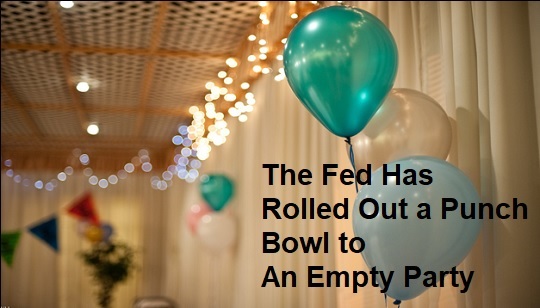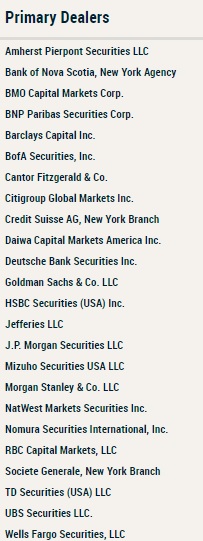-
Recent Posts
- Trump’s “Big Beautiful Bill” Is a Grotesque Giveaway to Fossil Fuel Billionaires While Adding $3.3 Trillion to Nation’s Debt
- Senator Chris Murphy Charges that Trump “Has Opened a Channel for Bribery”
- Congressman Casten: Trump’s Assault on the Rule of Law Is Causing Capital Flight Out of U.S. by Foreign Investors
- Trump’s Approval Rating Drops to 80-Year Low; IMF Says U.S. Tariffs Now Exceed the Highs During the Great Depression
- Nasdaq Has Lost More than 3,000 Points Since Trump’s First Full Day in Office in 2025; the Pain Has Barely Begun
- The Bond Crisis Last Week Was a Global No-Confidence Vote in U. S. President Donald Trump
- Trump’s Tariff Plan Guts $5 Trillion in Stock Value in Two Days; Senator Warren Calls for Emergency Action Before Markets Open on Monday
- Trump’s Attacks on Big Law, Universities, and the Media Have a Common Goal: Silence Dissent Against Authoritarian Rule
- Trump Administration Gives All Clear to Laundering Money through Shell Companies and Bribing Foreign Officials
- Four Megabanks on Wall Street Hold $3.2 Trillion in Uninsured Deposits – Which May Explain Senator Schumer’s Pivot to the GOP to Stop a Government Shutdown
- Here’s What Came Crashing Down Yesterday for Trump’s “Genius” Guy, Elon Musk: Tesla Stock, Access to Twitter (X), His Years of Secret Calls with Putin
- After Banning the Associated Press, Trump Is Now Targeting Specific Journalists That He Wants to See Fired
- Closely Watched Atlanta Fed Model Predicts Negative U.S. Growth in First Quarter
- Trump’s Gangster Diplomacy Makes Front Page Headlines Around the Globe
- Who Benefits Alongside Elon Musk If He Succeeds in Killing the CFPB: the Megabanks on Wall Street that Underwrite His Tesla Stock Offerings
- In Trump 1.0, the State Department Used Taxpayer Money to Publish a Book Elevating Elon Musk to a Superhero; It Was Funded by USAID, the Agency Musk Wants to Quickly Shut Down
- News Host Joy Reid Raises Threat of Trump Selling U.S. to Putin; Ten Days Later Her Show Is Cancelled
- Elon Musk’s DOGE Appears to Be Violating a Court Order; It Has Taken Down Hundreds of YouTube Videos that Educate Americans on How to Avoid Being Swindled
- Barron’s Releases Audio of Jamie Dimon Cursing Out His Workers at a Town Hall, as Dimon Plans to Dump Another One Million JPM Shares
- There’s One Federal Investigative Agency that Neither Trump nor Elon Musk Can Touch: It Just Opened an Investigation into DOGE
- Elon Musk’s Companies Were Under Investigation by Five Inspectors General When the Trump Administration Fired Them and Made Musk the Investigator
- Donald Trump Gives the Greenlight to Goldman Sachs and JPMorgan Chase to Return to Bribing Foreign Officials
- After Tech Geeks Built a Back Door to Loot Billions from FTX, Republicans Refuse to Investigate What Elon Musk’s Tech-Squad Did Inside the U.S. Treasury’s Payment System
- Former Prosecutor, Now U.S. Senator, Informs Tesla That CEO Musk May Be Violating Federal Law and to “Preserve All Records”
- Trump’s Hedge Fund Guy Is Now Overseeing the U.S. Treasury, IRS, OCC, U.S. Mint, FinCEN, F-SOC, and the Consumer Financial Protection Bureau
- As Elon Musk Begins Shutting Down Payments to Federal Contractors, a Strange Money Trail Emerges to His Operatives Inside the U.S. Treasury’s Payment System
- JPMorgan Chase Charged by Yet Another Internal Whistleblower with Cooking the Books
- We Asked Google’s AI Search Model, Gemini, Questions About the Fed and Wall Street Megabanks: It Got the Answers Dead Wrong
- With Trump and Melania’s Crypto Coins Likely to Raise Legal Challenges, Why Didn’t Trump Fire the SEC’s Inspector General in His Purge of IGs?
- Fossil Fuel Industry Could End Up Paying Tens of Billions for LA Wildfires and Deceiving the Public on Climate Change for Decades
- It’s Being Called the Biggest Grift by a President in U.S. History: Trump and First Lady Launch their Own Crypto Coins
- Trump Plans to Install a Fracking CEO to Head the Energy Department and Declare a National Emergency on Energy to Gain Vast Powers
- Fossil Fuel Money Played a Role in the Los Angeles Fires and the Push to Install Pete Hegseth as Secretary of Defense
- When It Comes to Wealth Retention in Retirement, Concrete May Be the New Gold
- Wall Street Watchdog Warns “Clock Is Ticking on a Coming Catastrophic Financial Crash”
- Wall Street Is Sending the Same Message to Americans on Fossil Fuel Financing that It Sent on Cigarettes: Drop Dead
- In a Six-Week Span, this Dark Pool with a Curious Past Traded 3.7 Billion Shares
- Wall Street’s Lobby Firm Hired Eugene Scalia of Gibson Dunn to Sue the Fed for Jamie Dimon
- Postmaster General Louis DeJoy Made $561,051 in Compensation in 2024, as Mail Costs Spiked and Delivery Deteriorated
- Fed Chair Jay Powell Sends a Bold Message to Trump and Tanks the Dow by 1123 Points
- The Head of Fixed Income at T. Rowe Price Makes the Scary Case for the 10-Year Treasury to Spike to 6 Percent
- $663 Billion in Cash Assets Have Gone Poof at the Largest U.S. Banks
- Donald Trump to Ring Bell at New York Stock Exchange Today as Hit List Posters Appear in Manhattan Targeting Wall Street CEOs
- Trump Has a Slush Fund to Prop Up the Dollar – Will He Use It to Prop Up Bitcoin Instead?
- A CEO Assassination; a Billionaire Heiress/NYPD Commissioner; a Secret Wall Street Spy Center – Here’s How They’re Connected
- Despite More than 1600 Tech Scientists Signing a Letter Calling Crypto a Sham, Trump Names a Crypto Cheerleader for SEC Chair
- The Fed Rings a Warning Bell: Hedge Funds and Life Insurers Are Reporting Historic Leverage
- Trump’s Nominee for FBI Director, Kash Patel, Has Businesses Financially Intertwined with Trump
- Donald Trump Is at Risk of Getting Named in a Fossil Fuels Conspiracy Lawsuit
- Trump Is Having Difficulty Getting a Lawyer to Accept the Nomination for SEC Chair: Here’s Why
Search Results for: JPMorgan
The Dark Secrets in the Fed’s Last Wall Street Bailout Are Getting a Devious Makeover in Today’s Bailout

By Pam Martens and Russ Martens: March 31, 2020 ~ From December 2007 to November 10, 2011, the Federal Reserve, secretly and without the awareness of Congress, funneled $19.6 trillion in cumulative loans to bail out the trading houses on Wall Street. Just 14 global financial institutions received 83.9 percent of those loans or $16.41 trillion. (See chart above.) A number of those banks were insolvent at the time and did not, under the law, qualify for these Fed loans. Significant amounts of these loans were collateralized with junk bonds and stocks, at a time when both markets were in freefall. Under the law, the Fed is only allowed to make loans against “good” collateral. Six of the institutions receiving massive loans from the Fed were not even U.S. banks but global foreign banks that had to be saved because they were heavily interconnected to the Wall Street banks through … Continue reading
Icahn Called BlackRock “An Extremely Dangerous Company”; the Fed Has Chosen It to Manage Its Corporate Bond Bailout Programs
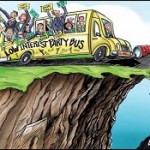
By Pam Martens and Russ Martens: March 30, 2020 ~ In 2015, the legendary Wall Street investor, Carl Icahn, called BlackRock “an extremely dangerous company.” (See video clip below.) Icahn was specifically talking about BlackRock’s packaging of junk bonds into Exchange Traded Funds (ETFs) and calling them “High Yield,” which the average American doesn’t understand is a junk-rated bond. The ETFs trade during market hours on the New York Stock Exchange, giving them the aura of liquidity when one needs it. Icahn said: “I used to laugh with some of these guys…I used to say, you know, the mafia has a better code of ethics than you guys. You know you’re selling this crap.” Icahn warned that “if and when there’s a real problem in the economy, there’s going to be a rush for the exits like in a movie theatre, and people want to sell those bonds, and think … Continue reading
New York Fed Has Allowed Dangerous Wall Street Banks to Have Lower Loan Loss Reserves than at time of 2008 Crash
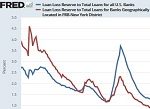
By Pam Martens and Russ Martens: March 27, 2020 ~ The New York Fed supervises four of the most dangerous banks in America: Citigroup, JPMorgan Chase, Goldman Sachs and Morgan Stanley. That opinion is not just ours but is documented by data from federal agencies. All four of these banks own federally-insured commercial banks that are backstopped by the U.S. taxpayer while also gambling in the stock market through their own Dark Pools and in trillions of dollars of derivatives. All four of these banks received tens of billions of dollars in bailout money during the 2007-2010 financial crash, which was brought on by their greed and corrupt activities in the derivatives and subprime market. Citigroup’s losses were of such magnitude that it became insolvent, turned into a 99 cent stock, and yet secretly received the largest bailout in global banking history from the same regulator who had allowed it … Continue reading
Stimulus Bill Allows Federal Reserve to Conduct Meetings in Secret; Gives Fed $454 Billion Slush Fund for Wall Street Bailouts

By Pam Martens and Russ Martens: March 26, 2020 ~ The U.S. Senate voted 96-0 late yesterday on a massive bailout of Wall Street banks versus a short-term survival plan for American workers thrown out of their jobs – and potentially their homes. The text of the final bill was breathtaking in the breadth of new powers it bestowed on the Federal Reserve, including the Fed’s ability to conduct secret meetings with no minutes provided to the American people. The House of Representatives has yet to vote on the bill. The bill provides specific sums that can be made as loans or loan guarantees to passenger airlines ($25 billion), cargo airlines ($4 billion), and loans and loan guarantees to businesses necessary to national security ($17 billion). But when it comes to the money going to the Federal Reserve and then out the door to Wall Street, the legislation says only … Continue reading
This Is the Fear Chart that the Smart Money on Wall Street Is Watching
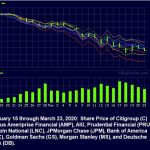
By Pam Martens and Russ Martens: March 24, 2020 ~ The chart that tells you how all of today’s economic troubles are going to end is not the bar graph of new deaths from coronavirus in Italy versus deaths in the U.S. It’s the chart that shows the number of potential deaths among the banks and insurance companies that have gorged themselves on risky derivatives and serve as counterparties to each other in a daisy chain of financial contagion. The chart above is why the Federal Reserve is throwing unprecedented sums of money in all directions on Wall Street. Because despite being a primary regulator to these massive bank holding companies, the Fed has no idea who is actually in trouble on derivative trades, other than looking at a chart like the one above. The chart above also justifies the Democrats refusing to sign off on the fiscal stimulus legislation … Continue reading
Here’s Why the Fed Hasn’t Yet Invoked Its 13(3) Emergency Powers to Stem a Stock Market Crash
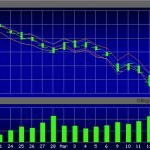
By Pam Martens and Russ Martens: March 17, 2020 ~ The U.S. stock market set new records yesterday – all of them bad. The Dow Jones Industrial Average suffered its worst point loss in history, closing down 2,997 points at 20,188.52, which effectively erases all of its gains in the last three years. On January 20, 2017, when Donald Trump was sworn in as President, the Dow closed at 19,827. It’s now grown by just 1.8 percent in total over that span of time. The Dow also had its second worst percentage loss in history yesterday, losing 12.93 percent. That loss is only exceeded by Black Monday, October 19, 1987, when the Dow lost 22.6 percent. It barely beats out October 28, 1929 when the Dow lost 12.8 percent and ushered in what would become the worst stock market crash in history. From late 1929 to 1933 the stock market … Continue reading
The Fed Tried to Give Away $1 Trillion to Wall Street Today and Failed, Suggesting Specific Banks Are In Trouble
By Pam Martens and Russ Martens: March 16, 2020 ~
What is the world coming to when the New York Fed can’t mix up $1 trillion of almost-free money in its punch bowl and get the mega Wall Street banks to drink freely?
The New York Fed handed out $129.60 billion this morning at an average interest rate of 0.112. That was for a one-day loan to one or more of Wall Street’s trading firms. The specific names of which firms are doing the borrowing are a closely-guarded secret at the Fed – just as they were during the financial crisis in 2008 until media lawsuits and a legislative amendment forced the banks’ names out into the open. All that the public is allowed to know today is that any of the Fed’s 24 primary dealers (Wall Street trading houses) are allowed to borrow from the facility. (See list below.)
The New York Fed also offered $500 billion in a 28-day loan this morning and, stunningly, it only had offers for $18.45 billion of the $500 billion, which was loaned at an average interest rate of 0.151 percent.
Despite that poor showing at its money spigot party this morning, the New York Fed made a surprise announcement and said it was throwing another money giveaway of $500 billion at 1:30 p.m. today. Again, only takers for $19.40 billion of the $500 billion showed up. The loans were made at the incredibly low average interest rate of 0.102 percent.
There was this same lack of demand last Thursday and Friday when the Fed tried to give away, almost for free, $1.5 trillion over the two-day span.
What could possibly account for this lack of greed from the typical pigs at the trough?
The reason that jumps to mind to anyone who has been following the Fed’s money spigot closely, is that there are only a handful of Wall Street banks that are in desperate need of this cash. Since the beginning of this program last fall, the New York Fed has imposed caps on how much any one of the 24 Wall Street firms could borrow at each offering. It refers to this limit as a “proposition.”
So, for example, on the latest $500 billion loans, firms can make a “proposition” up to $20 billion on loans backed by U.S. Treasury collateral and up to $20 billion on loans backed by government-backed mortgage securities. It’s not clear if the Fed would provide an individual bank with a total of $40 billion on that specific loan or just $20 billion for both propositions.
It’s also not clear if the Fed has, without the public’s knowledge, imposed an overall cap on how much any one bank can borrow within a specific period of time.
But what today’s unscheduled afternoon loan operation suggests is that a bank that borrowed last Thursday or Friday or this morning, may have been in need of more assistance this afternoon.
We looked at how the Fed’s primary dealers were trading today to see which banks were showing the most distress. At approximately 2:30 today, these banks were showing large percentage declines on the day: Citigroup was down a scary 18.24 percent; Morgan Stanley was down 14.35 percent; Bank of America was down 14.38 percent; and JPMorgan Chase was down 13.64 percent.
Deutsche Bank had earlier in the day traded at a new all-time low of $4.99 before bouncing back to $5.39 for a percentage decline of 9.67 percent. That leaves the bank with just $11.5 billion in common equity capital versus tens of trillions of dollars (notional) in derivatives exposure.
Fed Sets Off Panic with Plan to Eliminate Reserves at Wall Street’s Mega Banks
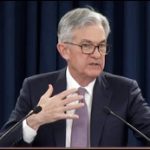
By Pam Martens and Russ Martens: March 16, 2020 ~ Last evening, it became painfully clear that the Board of Governors at the Federal Reserve do not understand the inner workings of Wall Street. After prattling on for months about the need to rebuild “ample reserves” at the behemoth Wall Street banks after the Fed was forced on September 17 to become the liquidity provider of last resort to the tune of $9 trillion cumulatively thus far, the Fed flipped its thinking on a dime yesterday and sent markets into a panic. As of 8:55 a.m. this morning, S&P 500 futures are locked, limit down, suggesting a steep drop in stocks at the open of trading at 9:30 a.m. Along with a series of other measures to prop up liquidity on Wall Street, the Federal Reserve Board of Governors announced last evening that it “has reduced reserve requirement ratios to … Continue reading
The Fed Has Pumped $9 Trillion into Wall Street Over the Past Six Months, But Mnuchin Says “This Isn’t Like the Financial Crisis”
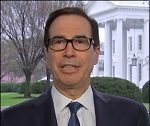
By Pam Martens and Russ Martens: March 14, 2020 ~ On February 12, 2020, the Dow Jones Industrial Average closed at 29,551.42. Yesterday, March 13, the Dow closed at 23,185.62 -– a loss of 6,365.80 points in one month’s time, or 21.54 percent. In 2008, the greatest financial calamity since the Great Depression, the Dow had lost 2,339.60 points or 21.4 percent one month after the frightening events of September 15, 2008 when Lehman Brothers filed bankruptcy, Merrill Lynch had to be taken over by Bank of America, and one day before the U.S. government seized the giant insurer, AIG, because it couldn’t pay the tens of billions of dollars in derivative bets it had made with the mega banks on Wall Street. On this past Friday morning, in what appeared to be an effort to restore confidence on Wall Street, U.S. Treasury Secretary Steve Mnuchin gave an interview on … Continue reading
Another Dangerous Virus Hits the U.S. – Wall Street Bank Contagion
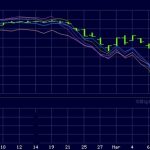
By Pam Martens and Russ Martens: March 12, 2020 ~ There has been a lot of delusional talk about the strong capital levels of the mega banks on Wall Street, not only from the Federal Reserve, but also from Wall Street analysts spreading fantasies about the banks on cable news programs. We took an afternoon off last Friday to hear what was being said about the banks on CNBC. We were stunned to hear Mike Mayo, a long-tenured bank analyst on Wall Street, who currently works for Wells Fargo Securities, deliver a huckster-like assessment of the mega Wall Street banks. Mayo said this: “The banking industry has the strongest balance sheet in a generation. Now think about this: the banks have added $1 trillion of additional capital – that’s $1 trillion with a T; $2 trillion of additional cash; $3 trillion of additional deposits. You have a Federal Reserve stress … Continue reading

